In thinking of the many ways that author Carole Boston Weatherford could’ve told the story of Kin, the only possible way to effectively do it is poetry. Specifically, this is a novel in verse, basically a book full of poems that combine to tell a narrative. This is where things get hazy for Kin because it’s not a linear story. Instead, it spans hundreds of years, generations within a family and often shifts the focus of who is speaking. By the time you get to the end of Kin you realize that this is a strong, powerful book that examines slavery in the United States in a way that you haven’t seen before.
Weatherford has always known that one of her ancestors had been enslaved. As she got older she discovered that another one of hers was also, but had served in the U.S. Colored Troops. The more that she thought about it she realized that these generations of her family had important stories to tell, which led her down the long and winding path of research. She looked into Wye House (where her ancestors lived under the Lloyd family), slave ships, and any resource in Talbot County, Maryland that could yield information on her history. Kin is a novel, but it feels like non-fiction and while historical realistic fiction isn’t a genre, this one is trailblazingly close to starting it.
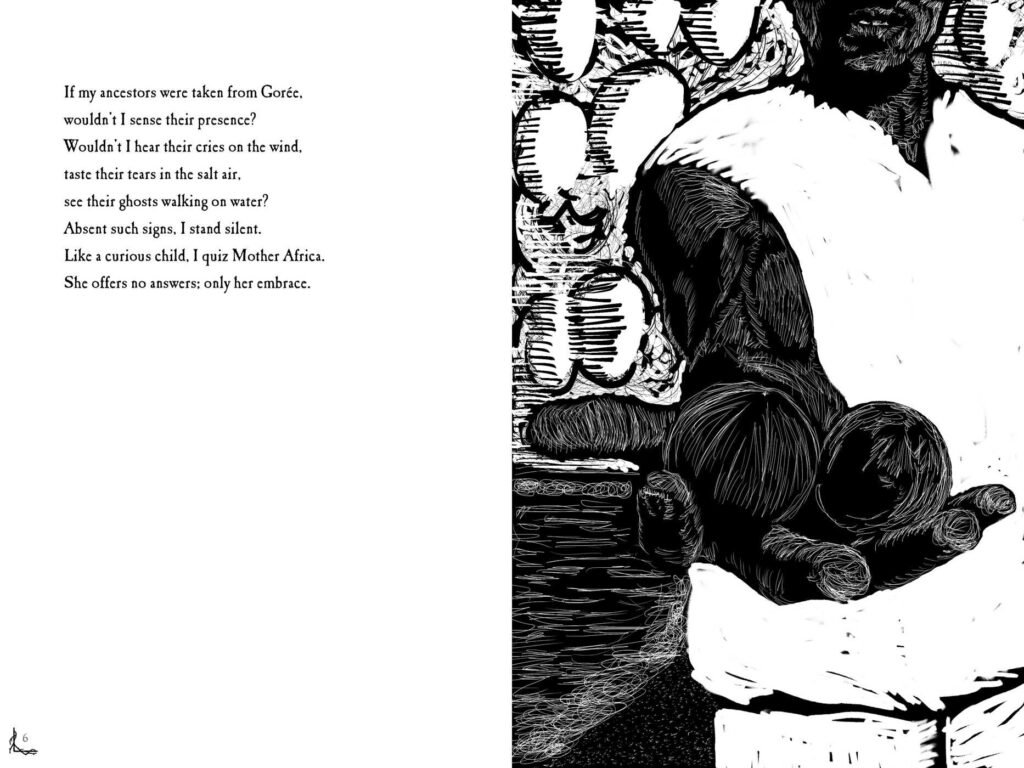
Initially, Kin will not be an easy book for upper elementary, middle, and high school students to read. It’s not that the content is difficult, it’s that it looks like no other book that students have seen and is a novel in verse. Today’s impatient students need to relax, thumb through the book first, take a breath, and then start reading it. Don’t expect to know where the book is going or predict the rising climax, resolution or so on. In this case the journey is the destination and Kin is more of an experience, than a book.
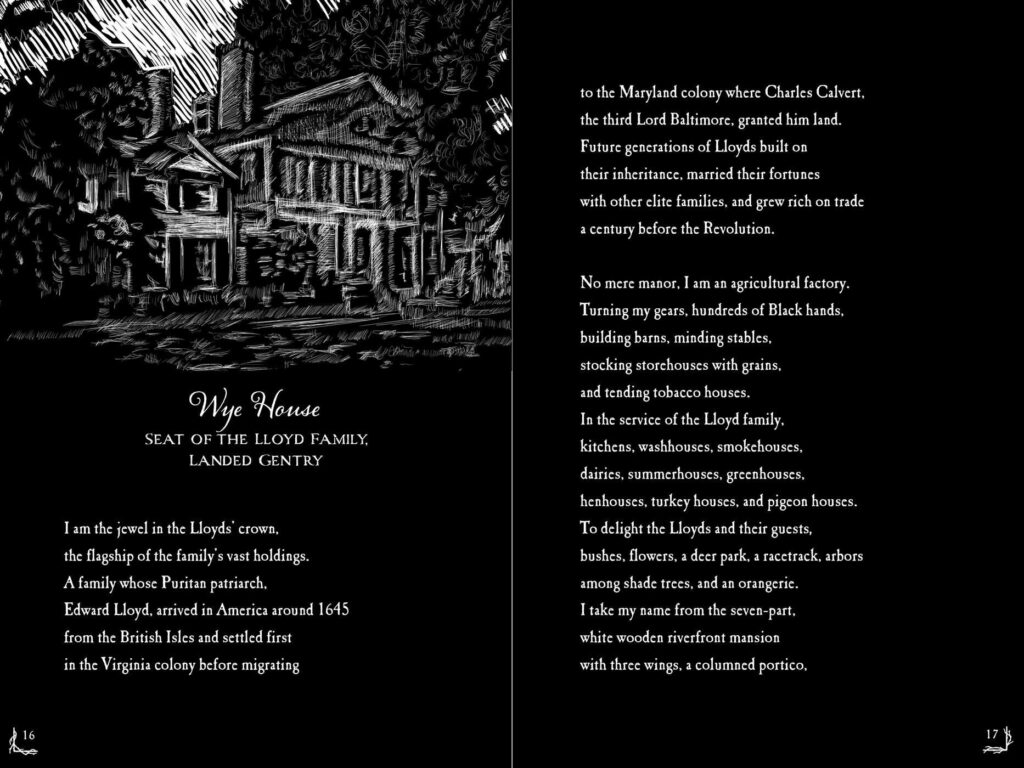
You’ll read a poem about her research. The next one might simply be an age and health chart for the slaves at the plantation. A poem about the Lloyds could follow that one that then immediately has a two-page granite poem about how swimming and how they used to be superior, until teaching that life-saving skill stopped.
It’s important for young readers not to get hung up on the fact that there isn’t one narrative in Kin. Instead, it’s a whole story, that’s broken up into dozens of segments that are powerfully enjoyable on their own. This is poetry that forces you to read it slowly. You want to savor every word, think about the details and wonder about the stories that you haven’t heard of until now.
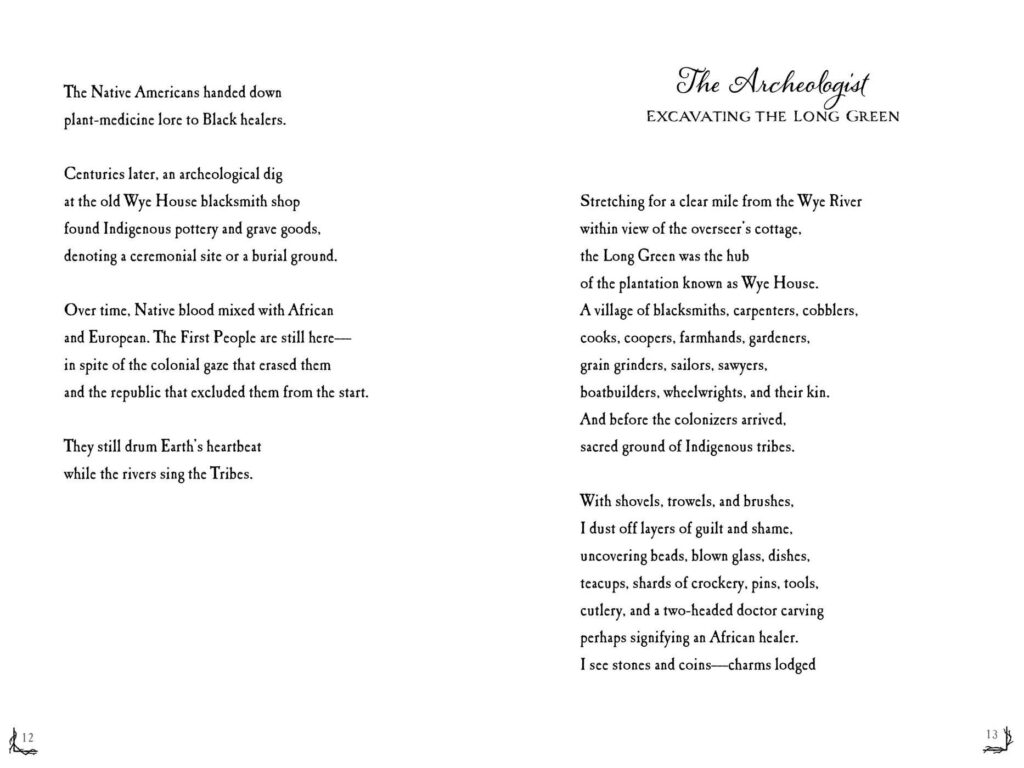
Readers will immediately notice the art from Jeffery Boston Weatherford. It’s strong, visceral and uses the contrasts of black and white to its benefit. Even the book’s cover, with its purple base and gold highlights in its name, makes readers want to touch the book. Once you do you’ll discover that the white tree inlay, which represents Weatherford’s family tree pops off of the page with texture. It’s an inviting, unconventional book that commands your attention if you give it a chance.
The content is appropriate for middle school students. They’ll start studying deeper elements of the Civil War, as well as, slavery, and can understand the story; but might miss the more mature or nuanced aspects in order to fully appreciate the book. While they’ll know the concept of slavery, the scale of those who were forced into it, the supporting players who enabled or profited from it and the toll that it laid down on generations after it won’t be understood.
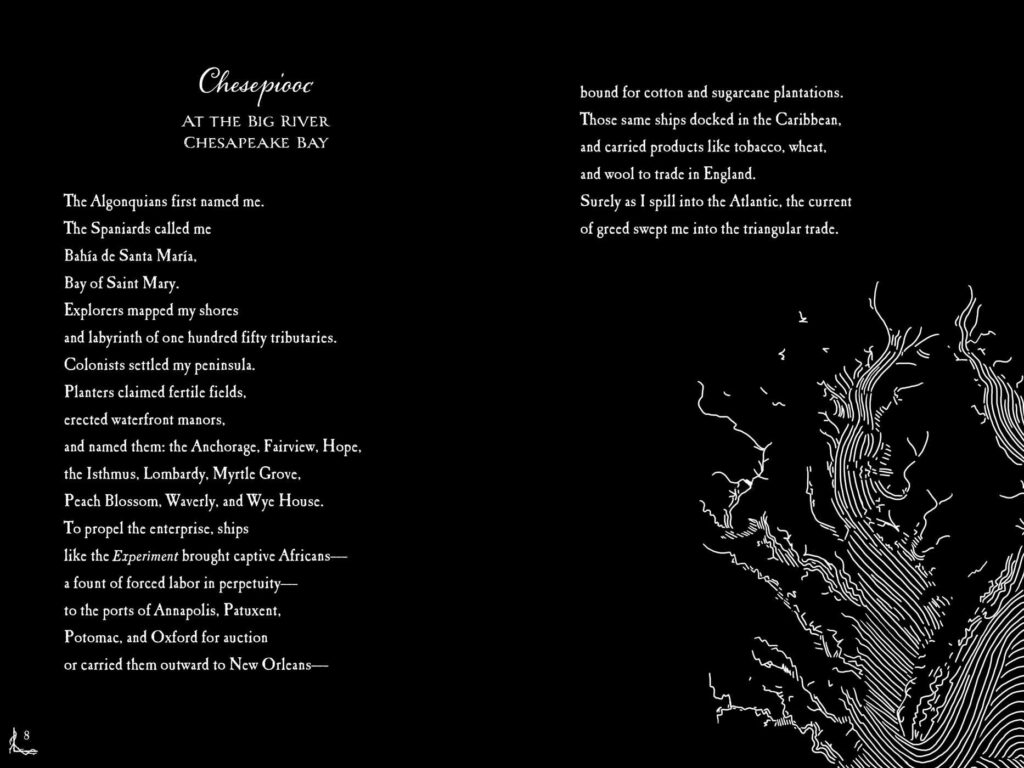
A high school teacher friend of mine teaches diverse texts and this book is perfect for them. In her class, they read various books or stories, sometimes individually and other times as a group, and then chat about them. Kin is the sort of text that is great for either situation. There are some who will read Kin and immediately discover the totality of the words. Some readers will need more time to digest the words or to have the context explained.
Ultimately, Kin: Rooted in Hope is a book that’s best consumed in short doses. It’s a powerful look at the cruel, day-to-day life that slaves suffered at very specific instances. It’s the variety in the crops they planted and how they changed according to the seasons. It’s the way in which you can almost feel the fear, adrenaline and family in certain stories. Kin is also a book that won’t leave your thoughts when you finish reading it.
Kin: Rooted in Hope is by Carole Boston Weatherford with art by Keffery Boston Weatherford and is available on Atheneum Books for Young Readers, an imprint of Simon & Schuster.
There are affiliate links in this post.

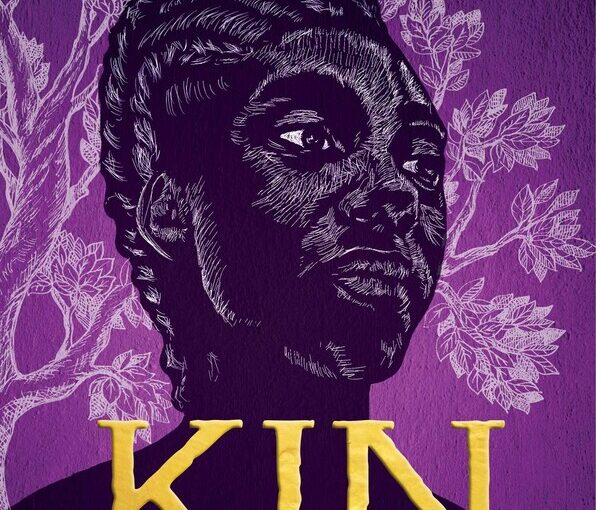
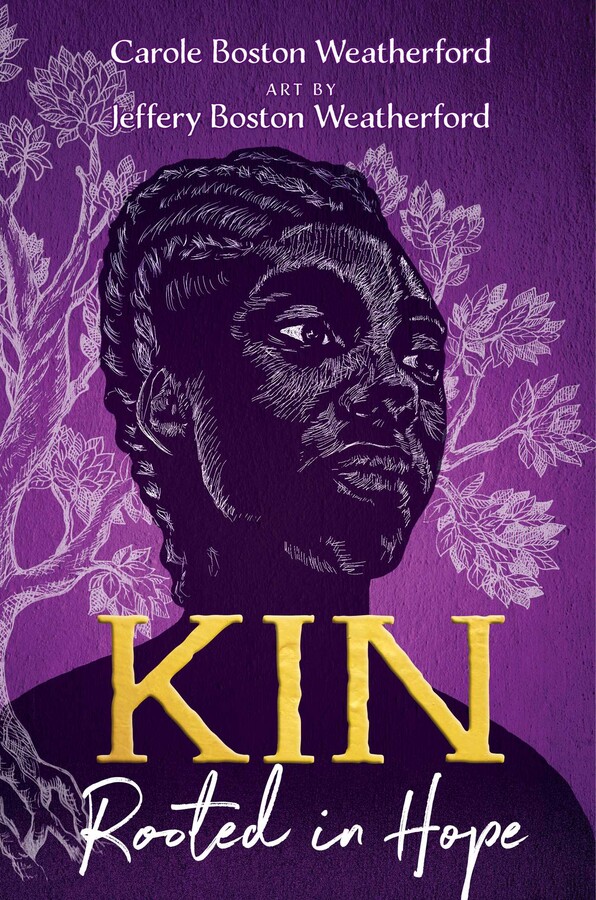



 Facebook
Facebook Twitter
Twitter Flickr
Flickr GooglePlus
GooglePlus Youtube
Youtube